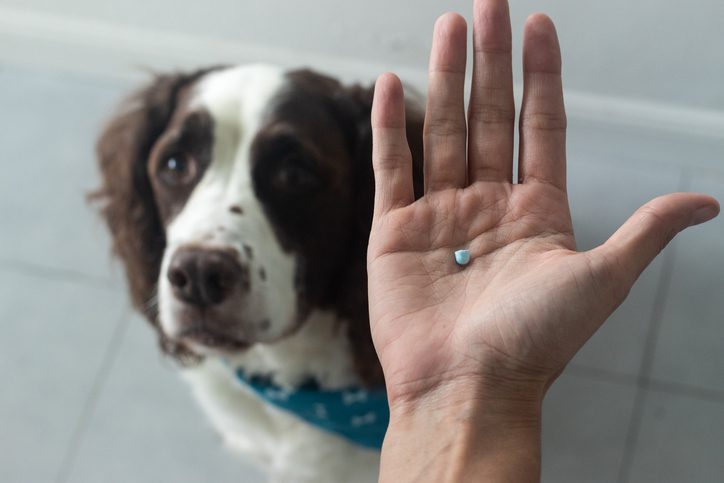Xylazine is a growing public health threat, but it’s one many people have never heard of. Let’s look at how xylazine abuse is increasing in the United States due to illegal drug contamination, what risks this drug poses, and how our South Carolina residential addiction treatment center can help.
Xylazine Is a Veterinary Medication
Xylazine is a veterinary medication developed in the 1960s that is used with horses and other large animals. It belongs to a class of drugs known as alpha-2 adrenergic agonists. Xylazine is primarily used for its sedative, analgesic, and muscle relaxant properties. It can induce a state of deep sedation and can be used for procedures such as minor surgeries, dental work, and diagnostic imaging in animals. Trade names for the drug when it is used in veterinary medicine include Rompun, Sedazine, and AnaSed.
Xylazine Was Recently Classified as an Emerging Threat to the U.S.
Xylazine is only authorized for veterinary use in the United States. However, public health officials first found evidence of the drug being used by humans in the early 2000s. Over time, use spread across the United States. In April 2023, President Biden declared it an emerging threat, citing two alarming statistics:
- From 2020 to 2021, forensic laboratory identifications of xylazine rose in all four U.S. census regions, with the highest increases in the South (193%) and the West (112%).
- During this same time period, xylazine-positive overdose deaths increased by 1,127% in the South, 750% in the West, over 500% in the Midwest, and over 100% in the Northeast.
Xylazine Is Most Often an Adulterant in Fentanyl or Heroin
Typically, xylazine is used to adulterate fentanyl or heroin. It’s extremely cheap, which creates a profit incentive for drug dealers and manufacturers. Some users also say adding xylazine to the supply extends the sedative and euphoric effects of the opioids by slowing the user’s heart rate, breathing, and blood pressure. When used with illicit drugs, xylazine is often called “tranq” or “tranq dope.”
According to a CDC fact sheet, the DEA has seized xylazine and fentanyl mixtures in 48 states. Testing of samples seized in 2022 revealed that approximately 23% of fentanyl powder and 7% of fentanyl pills contained xylazine.
Xylazine Can Cause Severe Flesh Wounds
Xylazine’s most disturbing side effect is that the drug is known to cause rotting black- and purple-colored flesh wounds. If left untreated, these wounds can lead to the need for partial or total limb amputation.
Xylazine can lead to flesh wounds in several different ways:
- Reduced blood flow due to vasoconstriction can contribute to tissue damage, especially in areas with poor blood circulation. It is possible for these types of wounds to develop spontaneously.
- Improper injection techniques or the use of contaminated needles and syringes can lead to tissue damage or infection.
- Xylazine can impair judgment and coordination, leading to accidents or injuries that may result in wounds or tissue damage.
Naloxone Won’t Treat an Xylazine Overdose
Signs and symptoms of a xylazine overdose may vary in severity depending on the amount of the drug consumed but often include:
- Extreme drowsiness and difficulty staying awake
- Dangerously low blood pressure, which may cause dizziness, fainting, or shock
- An unusually slow or irregular heartbeat
- Respiratory depression leading to slow, shallow, or irregular breathing
- Profound muscle weakness or paralysis
- Confusion or delirium
- Nausea and vomiting
- Seizures
- Coma
Xylazine does not respond to naloxone, the drug that is used to revive people who are overdosing from opioids. However, you should still administer naloxone in response to any suspected drug overdose to reverse possible opioid effects. The effects of xylazine will continue after naloxone is given, but the effects of the opioids will be reduced—allowing the person the time they need to seek medical care. In a hospital setting, doctors can treat an overdose by monitoring vital signs, administering IV fluids, and administering medications to address dangerously low blood pressure or heart rate.
There’s Always Hope for Recovery
Whenever a person is struggling with drug addiction, it’s important to remember that substance use disorders are treatable. With access to appropriate evidence-based care, a lasting recovery is possible.
At Waypoint Recovery Center, we are committed to guiding our clients on the path to recovery and providing the support they need to overcome addiction. Our treatment services include:
- Customized treatment plans tailored to each client’s unique needs
- 24/7 medical supervision to manage withdrawal symptoms and any underlying health concerns
- A wide range of evidence-based therapies, including cognitive-behavioral therapy (CBT), group therapy, individual counseling, and holistic approaches that promote healing of the mind, body, and spirit
- Peer support and group therapy sessions to create a sense of belonging and accountability
- Family counseling services to help heal relationships and provide the support needed for a successful recovery
- Aftercare planning to connect clients with resources and support for a sustainable, substance-free life
Want to learn more? Contact our admissions representatives to discuss care options available for yourself or your loved one.





